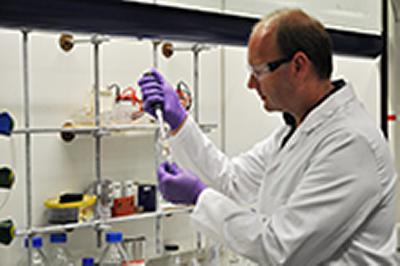Using Lego-like DNA to create simple and low cost drug discovery and diagnostic tools

Scientists at the University of Southampton have helped to develop artificial membrane pores, using Lego-like DNA building blocks, which could provide a simple and low cost tool for drug discovery and diagnostic devices.
The approach, which has been developed in collaboration with scientists at UCL and the University of Cambridge, is featured in the current issue of the journal Angewandte Chemie.
Membrane pores are the gateways controlling the transport of essential molecules across the otherwise impermeable membranes that surround cells in living organisms. Typically made from proteins, pores of different sizes control the flow of ions and molecules both and in and out of the cell as part of an organism’s metabolism.
Our understanding of membrane pores comes from the study of both natural pores, and from equivalent structures built in the lab by synthetic biologists. However, building synthetic pores out of proteins can be risky and time-consuming. A more straightforward approach is to use Lego-like DNA strands, which are chemically much simpler than proteins, are far easier and more predictable to work with than proteins. The technology is now known as DNA-origami.
“DNA is a construction material that follows very simple rules”, says Dr Stefan Howorka from UCL, who led the project. “New nanostructures can be easily designed using a computer programme, and the elements fit together like Lego bricks. So we can build more or less whatever we like.”
Using this approach, the team built a tiny tube measuring just 14 nanometres along and 5.5 nanometres across (around 10,000 times smaller than the width of a human hair). This formed the main part of their artificial nanopore. However, to insert the tube into a cell membrane, a key challenge had to be addressed: the water-soluble DNA-based structure will not embed itself into the greasy membrane, which is composed of lipids.
To overcome this, the scientists chemically attached to the DNA tube two large anchors, made of molecules which have a natural affinity for lipids. These structures were then able to embed the tube into the membrane. These structures, which are based on naturally derived organic compounds (porphyrins), were designed by a group led by Dr Eugen Stulz, a Senior Lecturer in Bio-organic and Materials Chemistry at the University of Southampton.
“Porphyrin molecules have ideal characteristics for our purposes,” Dr Stulz explains. “They are a strong membrane anchor, which locks the nanopore securely into the lipid membrane. In addition, they are fluorescent, which means they are easy to see and study. This makes them superior to other technologies.”
The pores were characterised with electrical and fluorescence measurements in collaboration with Dr Ulrich Keyser, from Cavendish Laboratory at the University of Cambridge.
The ability to create synthetic channels through lipid membranes are of great interest for biosensing, such as rapid DNA analysis. Tailored pores can also be expected to aid the development of new drugs. Prototype drugs are typically designed to affect a biological target, but are not engineered to cross the cell membrane. Self-assembled pores provide a route for drugs to pass into cells, allowing for much faster pre-clinical screening for activity.